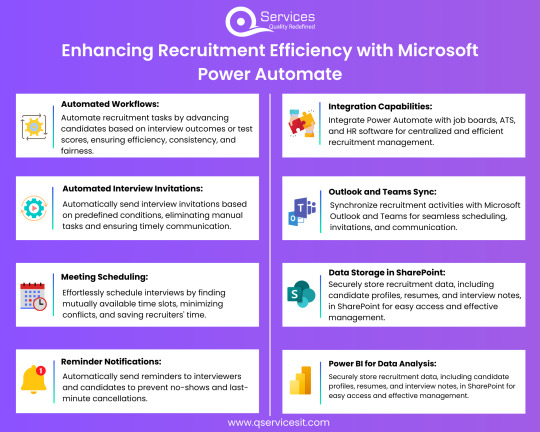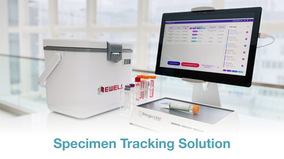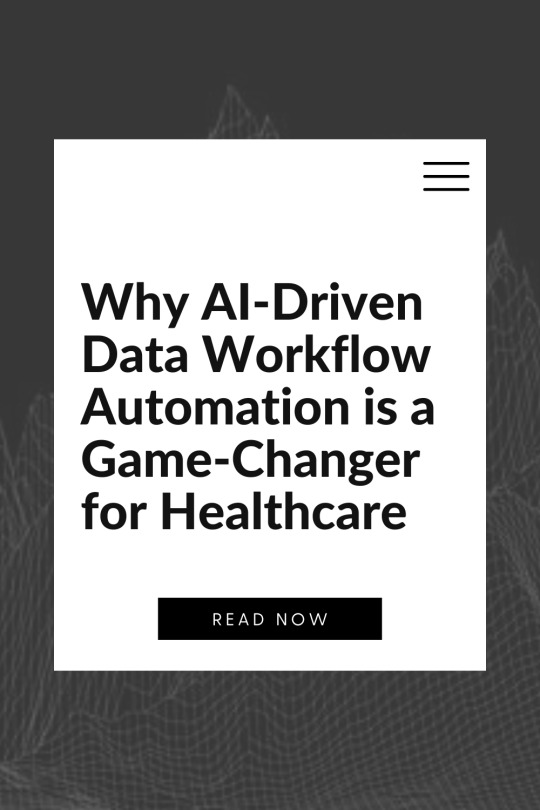#Automated workflows
Explore tagged Tumblr posts
Text
Streamline Operations with One Call Ticket Management Solutions
Discover how Norfield's One Call Ticket Management solutions can revolutionize your operational workflow. Designed to ensure accuracy and efficiency, our platform streamlines the ticketing process, helping you manage locate requests effortlessly. With automated workflows, real-time updates, and easy integration, you’ll minimize errors and enhance productivity across your team.
Whether you're in utility management, excavation, or construction, our system ensures compliance with safety regulations while reducing project delays. Norfield's robust tools enable you to handle high volumes of tickets with precision, saving you time and resources.
Explore our intuitive interface and see how it transforms ticket tracking, communication, and reporting, all in one place. One Call Ticket Management by Norfield is the ultimate solution for businesses that prioritize safety, efficiency, and success.
Visit NorfieldDP.com today and learn how you can simplify your ticket management process like never before.
#One Call Ticket Management#ticket management solutions#Norfield ticketing software#streamlined operations#locate request management#ticketing process efficiency#automated workflows#safety compliance#utility management tools.
0 notes
Text

Microsoft Power Automate
Enhance your recruitment efficiency with Microsoft Power Automate. Discover how automation can streamline your hiring process, from candidate sourcing to onboarding.
#microsoft power automate#power automate microsoft#automated workflows#power automate consulting services#it staff augmentation#it staff augmentation services
1 note
·
View note
Text
Laboratory Management 101: Best Practices for Success

When it comes to running a successful laboratory, effective Laboratory Management is key. In this blog post, we'll explore essential best practices for optimizing laboratory operations and ensuring quality outcomes. From Specimen Tracking to Automated Workflows and Instrument Integration, we'll cover everything you need to know to excel in laboratory management.
Specimen Tracking is a critical aspect of laboratory operations, ensuring accurate identification and handling of specimens throughout the testing process. Implementing robust specimen tracking systems enables laboratories to track the movement of specimens from collection to analysis, minimizing errors and ensuring reliable results. Utilize barcode technology and electronic tracking systems to streamline specimen management and enhance traceability.
Automated Workflows are essential for maximizing efficiency and productivity in the laboratory. By automating routine tasks such as sample processing, result interpretation, and data entry, laboratories can minimize manual errors and accelerate turnaround times. Invest in laboratory management software with built-in workflow automation capabilities to streamline operations and optimize resource utilization.
Maintaining Quality Control is paramount in laboratory management to ensure accurate and reliable test results. Implement comprehensive quality control protocols and regularly monitor performance indicators to identify and address deviations promptly. Utilize proficiency testing programs and internal quality assurance measures to validate testing accuracy and maintain compliance with regulatory standards.

Instrument Integration plays a crucial role in laboratory efficiency and data integrity. Integrating laboratory instruments with the laboratory management system enables seamless data transfer and real-time result reporting. Choose laboratory management software that supports instrument integration protocols such as HL7 and ASTM to streamline data exchange and enhance interoperability.
Real-Time Reporting capabilities are essential for delivering timely and actionable insights to healthcare providers and patients. Implement laboratory management software with real-time reporting features to enable instant access to test results and critical findings. Utilize customizable reporting templates and dashboards to tailor reports to specific user needs and facilitate data-driven decision-making.
In conclusion, mastering Laboratory Management requires a comprehensive understanding of best practices and principles. By prioritizing Specimen Tracking, Automated Workflows, Quality Control, Instrument Integration, and Real-Time Reporting, laboratories can optimize operations, improve efficiency, and deliver high-quality testing services to meet the needs of patients and healthcare providers.
0 notes
Text
Construction Automation: Types, Benefits and Future Outlook
Introduction In recent years, the construction industry has lagged behind manufacturing in adopting automation technologies. However, the current landscape presents an opportune moment for change. The construction sector’s trajectory towards a digital transformation is now marked by the increasing integration of automated technologies. From streamlining digital design and analysis processes to…

View On WordPress
#Automated Workflows#Autonomous Construction Equipment#Benefits of Construction Automation#Construction Automation#construction industry#Data Collection#digital transformation#Efficiency and Production#Future Outlook#Housing Crisis#integration#Job Creation#Off-Site Automation#On-Site Automation#Predictability and Quality Standards#Resource Scarcity#Robotics Adoption.#Robotics in Construction#Safety in Construction#Scalability in Construction#standardized components#Sustainability#sustainability in construction#Workforce Shortfalls
0 notes
Text
Maximizing Revenue: AuxDrive's Game-Changing Strategies for Punctual Payments

In the dynamic world of auto dealerships, revenue isn't just about sales; it's about managing the intricate dance of payments. AuxDrive, a trailblazer in the industry, has devised strategies that go beyond transactions, ensuring a harmonious flow that minimizes late payments and maximizes revenue.
Driving the Future: An Introduction to AuxDrive's Vision
At the heart of AuxDrive's approach is a vision that transcends traditional payment processes. It's not just about getting paid; it's about orchestrating a seamless experience where payments align with the rhythm of each dealership's unique operational beat. This vision positions AuxDrive as a strategic partner in the financial success of auto dealerships.
Understanding the Landscape: The Challenge of Late Payments
Late payments can disrupt the financial flow of any business, and auto dealerships are no exception. AuxDrive, with its finger on the industry's pulse, recognizes this challenge and addresses it head-on. The first step in overcoming a hurdle is understanding its contours, and AuxDrive dives deep into the complexities of late payments in the auto sector.
Tailored Solutions: AuxDrive's Adaptive Approach
There is no one-size-fits-all solution in the world of payments, and AuxDrive understands this implicitly. Its strategies are not pre-packaged; they are tailored to suit the individual needs and challenges of each dealership. Whether it's setting up personalized payment schedules or implementing reminders, AuxDrive's adaptive approach ensures that late payments become the exception, not the norm.
Efficiency Through Automation: Streamlining Payment Processes
The secret sauce of AuxDrive's success lies in its embrace of cutting-edge automation. By streamlining administrative processes, from invoicing to payment reminders, AuxDrive reduces the friction in the payment journey. This not only saves time for dealership staff but also enhances the efficiency of the entire payment ecosystem.
The Human Touch: AuxDrive's Commitment to Customer Relationships
In the world of technology, AuxDrive doesn't forget the human element. Beyond the algorithms and automated processes, AuxDrive is committed to nurturing strong customer relationships. Clear communication, transparent processes, and a genuine understanding of the challenges faced by dealerships set AuxDrive apart as a partner invested in the success of its clients.
Conclusion: AuxDrive, Where Revenue Maximization Meets Operational Harmony
In conclusion, AuxDrive isn't just a payment processing solution; it's a strategic ally in the pursuit of financial success for auto dealerships. Its strategies, rooted in understanding, adaptability, automation, and a commitment to relationships, position AuxDrive as a driving force in the effort to minimize late payments and maximize revenue. As dealerships navigate the complexities of the industry, AuxDrive stands ready to steer them toward a future where financial success is not just a goal but a tangible reality.
#business#fintech#business strategy#payment systems#payment services#payment solutions#merchant services#finance#high risk merchant account#customerexperience#autodealership#automated workflows#workflow automation#workflow#payment collection#debt collection#debt collector
0 notes
Text
We provide a full-fledged Customer relationship Management suite for our clients to process their business strategies and customer services in a more manageable manner. We invite you to accelerate your business with our tailor-made MS Dynamics 365 services and enhance your Sales, Marketing, and Customer Integration capabilities.
1 note
·
View note
Text
Common challenges with automated workflows

Automated workflows serve as a valuable resource that can assist businesses in saving time and reducing costs, while simultaneously enhancing accuracy and consistency. Furthermore, they provide employees with the freedom to concentrate on more strategic tasks. Nevertheless, there are several common hurdles that businesses encounter when integrating automated workflows.
Insufficient support from stakeholders
Gaining support from all stakeholders involved presents a significant challenge in implementing automated workflows. This entails securing the buy-in of employees who will be utilizing the workflows, managers responsible for overseeing them, and IT personnel tasked with their implementation. Effectively communicating the advantages of automated workflows to all stakeholders and addressing any concerns they may have is crucial.
Complexity
The design and implementation of automated workflows can be intricate, particularly when they involve multiple departments or systems. Thoroughly planning the workflow prior to automation is vital. Additionally, it is necessary to ensure the availability of appropriate tools and resources for successful workflow implementation.
Inadequate data
Successful automated workflows rely on accurate and relevant data. Insufficient data or inaccuracies in the data will hinder the effectiveness of workflows. Establishing a robust data management system prior to automating workflows is essential.
Security
Automated workflows introduce potential security risks due to automated access to sensitive data and systems. Considering the security implications of workflow automation is crucial. Implementing appropriate security measures to safeguard data and systems is equally important.
Change management
Automated workflows entail a significant change in the operational procedures of a business. Managing this change effectively is paramount to minimize disruption. Key steps include communicating the benefits of the change to employees, providing comprehensive training on the utilization of new workflows, and offering support during the transition period.
Overcoming the Challenges of Automated Workflows
The challenges associated with automated workflows can be overcome through meticulous planning, implementation, and effective change management. By addressing these challenges head-on, businesses can fully reap the benefits offered by automated workflows.
Here are some additional recommendations for overcoming the challenges of automated workflows:
Begin with small-scale implementation: Rather than attempting to automate the entire business at once, start with a simple workflow and gradually expand upon success.
Garner support from stakeholders: Ensure that all individuals affected by the automated workflow are onboard before initiating the implementation process.
Utilize a workflow management tool: Employing a workflow management tool simplifies the design, implementation, and management of automated workflows.
Thoroughly test workflows: Prior to deploying automated workflows organization-wide, conduct comprehensive testing to verify their functionality and efficiency.
Monitor workflows: Once automated workflows are in place, ongoing monitoring is essential to ensure their continued effectiveness.
By adhering to these suggestions, businesses can conquer the challenges associated with automated workflows and fully harness the numerous benefits they provide.
0 notes
Text

maybe i dont have the 'growth mindset' necessary to work in the industry but my first thought upon reading this was "kill yourself"
#okay i admit i dont really know how theyre incorporating “AI” into the workflow but as of now i cant imagine its better than automating#like yeah you just automate your workflow. everyone does it. why “AI”.#its just extremely annoying to see even high level educational institutions just throw this shit in. bro its been out for like 3-4 years...#everything looks like a nail type shit
246 notes
·
View notes
Text

i've combined myself a new workflow blogging automation... 👀 prepare for massive queues.
8 notes
·
View notes
Text

Magtec ERP: Your one-stop solution for a paperless and efficient business. Say goodbye to piles of paperwork and hello to streamlined approvals!
#magtec#erp#paperless#efficient#business#streamlined#approvals#digitalization#productivity#automation#workflow#solutions#technology#innovation#digitaltransformation#efficiency#documentmanagement#processimprovement#businessmanagement#officeautomation#digitaloffice#smartbusiness#cloudsolution#businesssoftware#workplaceefficiency#digitalrecords#magtecsolutions
2 notes
·
View notes
Text
Get Organized: ERPNext Distribution by Sigzen Makes It Easy
In today’s fast-paced Running a business can be tough, especially when things get messy. But what if there was a way to make it all simpler. That’s where ERPNext Distribution comes in. This awesome tool helps you manage your stuff like inventory, deliveries, and ordering without any hassle. It’s like having a helper for your business tasks. With ERPNext Distribution, you can say goodbye to…

View On WordPress
#Business Automation#ERP Integration#ERP Software Solutions#Inventory Management System#Procurement Management#Resource Planning#Stock Control#Workflow Optimization
2 notes
·
View notes
Text
i fucking hate how easily youtube can crash your computer if you watch videos for too long. what do you mean i have manually clear the cache every two hours fix your fucking website!!!
#acorn speaks#vent post#god!!!!! i hate this sm i am trying to WORK#i lose fifteen minutes of work every goddamn time which yeah tiny violin but. ugh it keeps HAPPENING its just so frustrating#and i canNOT find an extension or whatever to automate it :(#ill just have to set a timer and do it manually i guess. rip my workflow.#im going to go get a snack so i wont be so mad. fuck you youtube
5 notes
·
View notes
Text
Streamline Your DevOps Workflow: Automate Code Builds & Testing with AWS CodePipeline & CodeBuild!
Harness the power of automation to accelerate your development process and ensure code quality.
2 notes
·
View notes
Text
Accelerate into the future with AuxDrive! 🚗✨ Discover how auto dealerships are revolutionizing payment collections through seamless digital solutions. Embrace efficiency, enhance customer experience, and stay ahead in the game. Explore the driving force at AuxDrive.net. 🌐💳 #autotech #digitalpayments #paymentcollection #innovationindriving #auxdrive #workflowautomation #automatedworkflow
#business#fintech#business strategy#payment systems#payment services#payment solutions#merchant services#finance#high risk merchant account#customerexperience#autodealership#payment collection#automated workflows#workflow automation#workflow#payment gateway#payment processing#payments
0 notes
Text

Why AI-Driven Data Workflow Automation is a Game-Changer for Healthcare
The healthcare industry is one of the most complex and data-intensive sectors, dealing with vast amounts of patient records, medical imaging, research data, billing, and administrative processes. Historically, these workflows have been manually managed, leading to inefficiencies, errors, and delays in patient care. AI-driven data workflow automation is transforming healthcare by streamlining processes, enhancing accuracy, and improving overall patient outcomes. In this blog, we will explore how AI-powered automation is revolutionizing healthcare, its benefits, real-world applications, and what the future holds for this groundbreaking technology.
The Need for Automation in Healthcare
Healthcare systems globally are struggling with challenges such as:
Overwhelming administrative burdens
Rising operational costs
Increasing patient expectations for faster and more personalized care
The need for better compliance with regulations such as HIPAA and GDPR
Data silos between hospitals, clinics, and insurance providers
AI-driven workflow automation addresses these challenges by automating repetitive tasks, integrating data sources, and improving decision-making capabilities through predictive analytics.
Key Benefits of AI-Driven Workflow Automation in Healthcare
1. Improved Efficiency and Productivity
AI can automate tasks such as scheduling appointments, processing insurance claims, and managing electronic health records (EHR). This reduces the administrative workload on healthcare staff, allowing them to focus on patient care.
2. Enhanced Accuracy and Reduced Errors
Manual data entry and processing errors can lead to misdiagnoses, incorrect billing, and treatment delays. AI-driven automation minimizes these risks by ensuring accurate data input, processing, and analysis.
3. Faster and More Personalized Patient Care
AI-powered chatbots and virtual assistants can help patients book appointments, receive reminders, and get answers to medical inquiries. Machine learning algorithms analyze patient data to recommend personalized treatment plans.
4. Cost Reduction
By automating repetitive and time-consuming tasks, healthcare organizations can cut labor costs and reduce operational expenses, making medical care more affordable and efficient.
5. Better Compliance and Security
AI-driven solutions ensure that sensitive patient data is handled according to regulatory requirements. Automated workflows can track and report compliance issues in real time, reducing legal risks for healthcare providers.
Applications of AI-Driven Data Workflow Automation in Healthcare
1. Electronic Health Records (EHR) Management
AI-powered automation helps in data extraction, categorization, and updating patient records without human intervention. This ensures real-time access to accurate and up-to-date information for doctors and medical staff.
2. Medical Imaging and Diagnostics
AI-driven image recognition tools can quickly analyze X-rays, MRIs, and CT scans, assisting radiologists in detecting diseases like cancer, fractures, and neurological disorders with high accuracy.
3. Appointment Scheduling and Patient Engagement
AI-powered chatbots and virtual assistants can handle appointment scheduling, send reminders, and answer patient queries, reducing the burden on healthcare staff and improving patient satisfaction.
4. Billing and Insurance Claims Processing
Automation streamlines medical billing by detecting errors, verifying insurance claims, and ensuring compliance with coding standards, leading to faster reimbursements and fewer claim denials.
5. Predictive Analytics for Disease Prevention
Machine learning algorithms analyze patient history, lifestyle, and genetic factors to predict disease risks and recommend preventive measures, helping reduce hospital admissions and improving public health outcomes.
6. Clinical Trials and Research
AI accelerates clinical trials by automating data collection, patient recruitment, and analysis of medical research, leading to faster drug development and approvals.
7. Telemedicine and Remote Patient Monitoring
AI-powered automation enables remote patient monitoring through wearable devices that collect and analyze health data in real time, allowing doctors to intervene before conditions worsen.
Real-Life Case Studies in AI-Driven Healthcare Automation
Case Study 1: Mayo Clinic ��� AI for Early Disease Detection
The Mayo Clinic, a renowned medical research center, has integrated AI-driven automation into its workflow to enhance early disease detection. One notable example is its use of AI-powered imaging analysis to detect heart disease and certain types of cancer earlier than traditional methods. By leveraging machine learning algorithms, Mayo Clinic's AI systems analyze thousands of medical images to identify patterns that may indicate disease, helping doctors make more accurate diagnoses faster. This AI-driven approach has significantly reduced diagnostic errors and improved patient outcomes, demonstrating the power of AI in predictive medicine.
Case Study 2: Mount Sinai Health System – AI-Powered Radiology Workflow
Mount Sinai Health System in New York has implemented AI automation in its radiology department to streamline image analysis and reporting. The hospital's AI-driven workflow automates the sorting and prioritization of medical images, allowing radiologists to focus on the most urgent cases first. By analyzing CT scans, MRIs, and X-rays in real time, the AI system flags abnormalities such as tumors, fractures, and internal bleeding, expediting the diagnostic process. This has reduced patient wait times and improved treatment planning, showcasing how AI can enhance efficiency in high-demand medical environments.

Challenges and Considerations
Despite its advantages, AI-driven workflow automation in healthcare comes with challenges:
Data Privacy and Security: Ensuring that AI systems comply with HIPAA, GDPR, and other regulations is crucial to protecting patient data.
Integration with Legacy Systems: Many hospitals still use outdated systems that may not easily integrate with AI-powered solutions.
Trust and Adoption: Healthcare professionals may be skeptical of AI-based decision-making and need proper training to understand its benefits.
Cost of Implementation: While AI-driven automation leads to cost savings in the long run, the initial investment can be high for smaller healthcare providers.
The Future of AI-Driven Workflow Automation in Healthcare
The future of AI in healthcare looks promising, with advancements such as:
AI-powered robotics for surgeries and rehabilitation – Surgical robots are becoming more precise, allowing for minimally invasive procedures with faster recovery times. AI-driven robotic-assisted surgeries will enhance accuracy and reduce risks.
Natural Language Processing (NLP) for better doctor-patient communication – AI-powered NLP will improve how healthcare providers interact with patients, translating complex medical jargon into simple terms and enabling voice-driven medical documentation.
Blockchain for secure and decentralized patient data management – AI and blockchain will combine to ensure patient records are secure, tamper-proof, and easily accessible across healthcare institutions.
AI-driven drug discovery and personalized medicine – AI is accelerating drug development by analyzing vast datasets to identify potential treatments and tailoring medications to individual genetic profiles.
AI-integrated wearable technology for proactive healthcare – Smart wearables with AI capabilities will track vital signs, detect anomalies, and alert healthcare providers before health issues escalate.
AI-driven mental health support – AI-powered chatbots and virtual therapists will assist in detecting and managing mental health conditions, making mental healthcare more accessible.
AI in emergency and disaster response – AI will play a crucial role in detecting disease outbreaks, optimizing hospital responses, and assisting in large-scale disaster management efforts.
As AI continues to evolve, its impact on healthcare will only grow, making medical services more efficient, accurate, and accessible.
AI-driven data workflow automation is undeniably a game-changer for the healthcare industry. By improving efficiency, reducing costs, and enhancing patient care, AI is paving the way for a smarter, data-driven healthcare ecosystem. While challenges remain, ongoing advancements and regulatory compliance measures will ensure that AI-powered automation becomes a standard practice in healthcare. The integration of AI-driven automation is the future of modern healthcare.
Learn more about DataPeak:
#datapeak#factr#saas#technology#agentic ai#artificial intelligence#machine learning#ai#ai-driven business solutions#machine learning for workflow#ai solutions for data driven decision making#ai business tools#artificialintelligence#aiinnovation#digital trends#digital technology#digitaltools#datadrivendecisions#dataanalytics#data driven decision making#data analytics#workflowautomation#best ai tools for data pipeline automation#ai platform for business process automation#ai driven data workflow automation#healthcare#ai healthcare
0 notes
Text
Streamline Operations with Smart Business Automation and Custom Workflows
In today’s fast-paced market, efficiency is the name of the game. Businesses that continue to rely on outdated manual processes often find themselves falling behind. As digital transformation is redrawing the map of how businesses work, adding a business automation workflow into the mix can prove transformative. Whether customer service, internal communications, or data accuracy need a boost, automation is a scalable answer that unlocks growth and productivity.
Why Automation Matters in Business Today
Today's companies create enormous volumes of data every day—emails and reports, invoices and customer files. Processing these by hand takes too much time and raises the risk of errors and lost opportunities. A business automation workflow allows companies to automate routine, repetitive tasks, freeing up to focus on strategic and creative work.
Through automation, companies are able to provide more consistency in operations, better compliance, and quicker turnaround. For example, automated invoicing systems minimize delays in payment, while CRM integrations facilitate better customer interactions. This contributes to better operational efficiency and a nimbler business model that can easily respond to changing markets.
The Value of Custom Automation Solutions
While off-the-shelf automation tools can offer immediate relief, they often fall short when it comes to fitting seamlessly with unique business models. That’s where custom automation solutions come into play. These tailor-made systems are designed to align with specific workflows, priorities, and goals, ensuring that the automation supports your operations—not the other way around.
A well-designed custom solution not only addresses current inefficiencies but also scales with your business. It connects departments, platforms, and data systems to provide a cohesive ecosystem that’s both flexible and robust. Whether you run a small service-based business or a larger enterprise with multiple departments, custom automation ensures your processes are fine-tuned for maximum output with minimum waste.
Building a Smarter Future with Automation
Automation is no longer a luxury reserved for giant corporations. It's a strategic investment that can work for businesses regardless of size. From automating marketing emails to optimizing onboarding processes, the uses are immense and powerful. When properly configured, automation eliminates human error, increases transparency, and opens space for creativity.
As more businesses adopt digital tools, being competitive is about transforming the way work is done. Rather than patching together solutions, companies can now create smart workflows that seamlessly integrate with their current systems. When automation is well-planned and executed, it becomes a force multiplier for sustained growth and operational excellence.
Ready to optimize your business with automation? Stop by Keanonbiz.com to see how Kean on Biz can assist you in creating customized automation solutions tailored to your specific needs.
0 notes